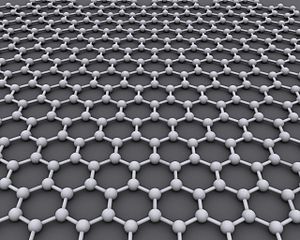Graphene is a one-atom-thick layer of carbon that has been hailed as a potential silicon replacement capable of extending the exponential computing advances that modern society has come to depend on. Despite the material’s profile of being strong, flexible, light-weight and a good conductor, there are still a number of challenges that must addressed before it is suitable for use in microprocessors and other electronics devices.
Researchers the world over are pushing hard to advance the status of this potential wonder material. This week two teams of scientists, one hailing from the University of Texas at Austin and the other a combined team from Rice University and the Georgia Institute of Technology, released different findings relating to graphene. The first sheds light on a particular thorny challenge regarding how graphene is used in real-world devices, and the second concerns the brittle nature of graphene sheets, which it has been found are only as strong as their weakest link. Computational modeling was integral to both projects.
The University of Texas at Austin team, led by Li Shi, a professor of mechanical engineering, along with graduate research assistant Mir Mohammad Sadeghi and post-doctoral fellow Insun Jo, structured an experiment in order to study thermal conductivity when the thickness of graphene on a substrate was increased. Thermal conductivity is a critical property as electronics components head to the nanoscale. It enables heat to distribute out such that hot spots are prevented. When graphene is in its ideal state, i.e. freely suspended in a vacuum, it is excellent thermal conductivity. Alas real-world conditions are not so ideal.
As Li Shi explains: “When you fabricate devices using graphene, you have to support the graphene on a substrate and doing so actually suppresses the high thermal conductivity of graphene.”
The team observed that thermal conductivity increased as the number of layers grew from a single one-atom layer up to 34 layers, but not to the point where it was as high as so-called bulk graphite, which is an excellent heat conductor.
The findings, which appear in the September 2013 issue of the Proceedings of the National Academy of Sciences, have prompted the team to explore new ways of supporting or connecting graphene with the macroscopic world. Among the techniques they are considering are three-dimensional interconnected foam structures of graphene and ultrathin graphite, as well as hexagonal boron nitride, which has a crystal structure very similar to graphene. Germanane is another material that shows promise for use in electronics or thermoelectric energy conversion devices.
The theoretical calculations that underpinned much of this work were performed on the 10-petaflop (peak) Stampede supercomputer. The NSF-funded system, one of the most powerful in the world, is housed at the Texas Advanced Computing Center (TACC) at The University of Texas at Austin.
“In order to really understand the physics, you need to include additional theoretical calculations. That’s why we use the supercomputers at TACC,” said Shi. “When you do an experiment, you see a trend, but without doing the calculations you don’t really know what it means. The combination of the two is very powerful. If you just do one without doing the other, you might not develop the understanding needed.”
In a separate study, researchers Jun Lou at Rice and Ting Zhu at Georgia Tech also look at the limitations of graphene in real-world settings. The bonds between carbon atoms are known to be the strongest in nature, and it follows that a perfect sheet of graphene would share this property, but in actual applications, graphene sheets do not live up to their theroetical promise. In a first of its kind experiment, the two researchers measured the fracture toughness of graphene that was marred with minor imperfections to simulate real-world conditions and found it to be “substantially lower” than the instrinsic strength of graphene.
“Everybody thinks the carbon-carbon bond is the strongest bond in nature, so the material must be very good,” Lou said. “But that’s not true anymore, once you have those defects. The larger the sheet, the higher the probability of defects. That’s well known in the ceramic community.”
The Rice team did the experiments and the Georgia Tech team ran computer simulations of the entire fracture process. The modeling was tightly coupled with the experiments, said Zhu.
Because most graphene has defects, its actual strength is likely to be significantly lower than the intrinsic strength of a perfect sheet of the atom-thick carbon material. The findings provide a deeper understanding of how defects will affect the handling, processing and manufacture of the materials, said Lou. It also demonstrates the importance of manufacturing graphene sheets that are made to exacting standards, as free from errors as is feasible.




























































